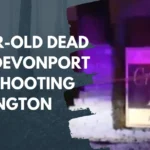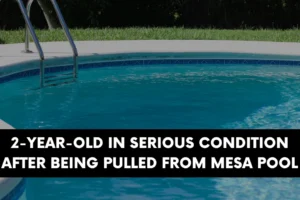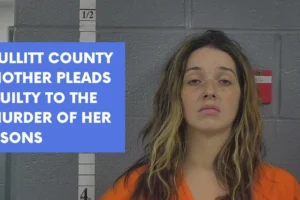Students who live in poverty, need help to perform at grade level or attend small rural schools often face challenges and limited opportunities their more affluent, higher-achieving peers in larger urban schools may not, but Arizona public education leaders are finding ways to increase equity and opportunity for all students.
Nearly 100 educators, administrators and school board members discussed what they’ve found that works at the Equity and Opportunity Summit hosted by the Hispanic/Native American Indian Caucus of the Arizona School Boards Association in Phoenix on June 21.

Vince Yanez, right, with Arizona Community Foundation talks with Sam Leyvas of Arizona State University at the Equity & Opportunity Summit on June 21, hosted by the Hispanic/Native American Indian Caucus of the Arizona School Boards Association.
“We have struggles, but we can overcome them,” said Eva Carillo Dong, president of the Hispanic/Native American Indian Caucus. “There are opportunities in many of our school districts today.”
Arizona education leaders must ensure that adequate resources and support are in place for all students, especially the most vulnerable, as many education reforms go into effect, said Jacob Moore, a member of the Arizona Ready Council.
The new assessment based on Arizona’s College and Career Ready Standards that students will take in the 2014-15 school year affects not only whether they will be retained if they’re not reading at grade level by the end of third grade, but their academic growth also has an impact on school accountability A-F grades and teacher/principal evaluations, Moore said.
“If we truly believe that our children deserve a quality education, we will need to ensure a smooth transition to the new education reforms and resist the mistakes made with AIMS,” Moore said. “The additional reforms will require that we are active participants in our children’s education and in our local school systems.”
Benson Unified School District administrators told how using Beyond Textbooks, daily math drills, reteach and enrichment, an extended school year, and parent support for intersessions to help students who need more help meeting goals has boosted overall student achievement.

Arizona State University assistant professor David Garcia compares the academic growth of charter school student to students in traditional public schools during the Equity and Opportunity Summit in Phoenix on June 21, 2014.
As education leaders look at ways to close the achievement gap between racial/ethnic minorities and the majority population, they need to find ways to address “the greatest predictor of academic achievement, and that is poverty,” said Vince Yanez, executive director for education and public policy at Arizona Community Foundation.
“The achievement gap between poor children and rich children has grown significantly over the past three decades and is now nearly twice as large as the black-white gap,” Yanez said.
Thirty two million American children are classified as low income, and the number of children in poverty rose 25 percent since 2000.
Arizona has the fifth highest poverty rate in the nation at 29 percent, up from the 22 percent nationwide. In 2012, 33 percent of white families in Arizona were considered low income, 59 percent of African-American families, 68 percent of Latino families, and 76 percent of Native American families, Yanez said.
“Poverty is a huge issue,” Yanez said. “It transcends what we do in a classroom, it transcends the resources we have as a P-20 system, and the disparities have grown so great that they have become extremely difficult, I won’t say impossible, for our schools alone to close that gap.”
There are many reasons this is the case, but “there is one that resonates with me a little bit more and that is this: Widening gaps in economic and social resources between rich and poor over the past few decades have eroded public school’s ability to overcome those disadvantages,” Yanez said mentioning the report “Whither Opportunity? Rising Inequality, Schools and Children’s Life Chances.”
Arizona has the second highest income gap in the nation and the nation’s deepest cuts for education funding, Yanez said.
“When those cuts came over the past several years, you know which programs get cut. It’s typically the things outside your core responsibilities so those are programs in early education, after-school programs, remediation type programs, funding for reading coaches, math coaches, counselors and a host of other issues,” Yanez said. “When you look at those particular areas there is a disproportionate impact on our poor children.”

Murphy Elementary School District Superintendent Lenora Jenkins describes how the Murphy Education and Health Center was created and the services it provides to district families at the Equity and Opportunity Summit in Phoenix.
One district taking steps to address the effects of income inequality and empower its parents to help their children is Murphy Elementary School District in Phoenix which created the Murphy Education and Health Center in a “virtually empty” 9,000 square-foot district building.
“Our district is 95 percent Hispanic, low socioeconomic level, 40 percent mobility rate, with limited access to services, and the average annual income is between $7,000 and $9,000,” said Lenora Jenkins, superintendent of Murphy Elementary district. “Many of my families are undocumented. Because they are undocumented they are not going to receive a lot of services.”
Jenkins said she with the Governing Board and local nonprofits, business leaders, and the City of Phoenix neighborhood services to empower parents as their children’s first teacher by providing them with English language classes, career and computer skills, nutrition classes, physical activities and medical and dental care for their children “to strengthen families in the areas of communications, literacy, learning, decision making and economic self sufficiency.”
Jenkins said parents told her “it was very important to them to learn English. They wanted to be able to help their children” with their schoolwork, asked for classes four days a week and something that would involve their children also.
So Jenkins spoke with the governing board about the ideas she had to use some Title I and Maintenance and Operation funds to expand services in the building which housed two pre-Head Start preschool classes courtesy of a district partnership with Chicanos por la Causa and a Central Arizona Shelter Services Dental Clinic. The building also had two other classrooms, offices and a full-service cafeteria that were not being used.
The governing board approved a plan to move registrars and community liaisons to the center so when parents enrolled students they could find out about programs other family members might qualify for and get the help their family needs. A partnership with Phoenix Rotary helped get the café going, and also led to a partnership with Mission of Mercy to provide free medical care to students, Jenkins said.
Community services liaisons partnered with the Phoenix OIC to bring in job readiness skills, Esperanza for health education and many other organizations to bring needed services to families, Jenkins said.
“At the last board meeting, the board approved a partnership with Southwest Behavioral Health and they will be bringing counselors into the schools and into the center,” Jenkins said.

Arizona Ready Council Member Jacob Moore, left, talks with Lenay Dunn with WestED, center, and ASBA Board President Elaine Hall, right, after speaking at the Equity and Opportunity Summit.
The CASS dental clinic partnered with GoDaddy which funded a $1.5 million renovation to add more spaces so more children can be served, Jenkins said. Beginning July 1, pediatric dental residents from St. Luke’s Hospital began doing their internships at the center.
“The program that goes on at the Ed Center is called Empower which stands for Equipping Murphy Parents with Opportunities for Wellness Education and Responsibility, and I look at as being the wind beneath the wings of the parents,” Jenkins said. “Once things got going at the center we started to serve 100 families a week.”
The partnership between Jenkins the district and the board led to the project earning a first place Magna Award from the American School Board Journal and Sodexo.
“It’s something that I’m very proud of, it’s something that my board is very proud of and it’s growing all of the time as parents find out more,” Jenkins said.
Children spend just 15 percent of their life in school, and “what public education is supposed to do is make up for the inequities of the other 85 percent of the child’s life, during the 15 percent that they’re in school,” said Dr. David Garcia, Arizona State University associate professor in the Mary Lou Fulton Teachers College and candidate for state superintendent of public instruction.
What would help education to provide what children need? Long-term investment in education, opportunities, getting past conservative views that the state’s involvement in early education is taking over what should be happening at home, and focusing on the idea of stability in the home, Garcia said.
“There is no other state that has banked on school choice to improve public education than Arizona,” Garcia said. “Our parents have more choices available to them than any other state in the country. The idea is very much a market model. The thought is that as parents make choices the school that they go to and the school that they left will get better. That hasn’t worked out the past 20 years in Arizona. Go back to 1994, our position relative to other states is nearly identical. We haven’t moved relative to other states.”
Nationally, charter school students do .02 percent better than traditional public school students in reading and math, Garcia said.
Studies show parents say they choose charter schools for smaller class size, safety, and specialized programs, and a higher percentage of white students in Arizona and a lower percentage of Hispanic students attend charter schools compared to our district schools, Garcia said.
“There is good evidence that our choice environment in Arizona has created more segregation by race and ethnicity than prior,” Garcia said. “This is also an issue our public school systems have been working with and battling now for over 60 years. I do think that this is not necessarily an issue of charter schools or traditional public schools. I do think that this is an issue with choice, and I believe that when given a choice people go choose to self-segregate with people like themselves.”
When students leave a Phoenix-area district school under open enrollment, they most often go to schools in neighboring districts, and this affects districts seeking bonds or overrides, because parents may not vote for those in a district their own children don’t attend, Garcia said.
Education leaders also need to hold education policy makers accountable, Yanez said.
“We need to support those ones who are doing work, that really support our public schools, and I’m not just talking about the state legislature,” Yanez said.
“We have a far too silent majority in this state that can move our education system in the direction it needs to go,” Yanez said. “But we need to be out there advocating for those types of changes, those types of support to people making decisions so we don’t find ourselves with no state preschool program, with state budgets for K-12 that get slashed, less funding than in 2009 and state policies that don’t result in 78 percent increases in (state college) tuition over the past five years.”










